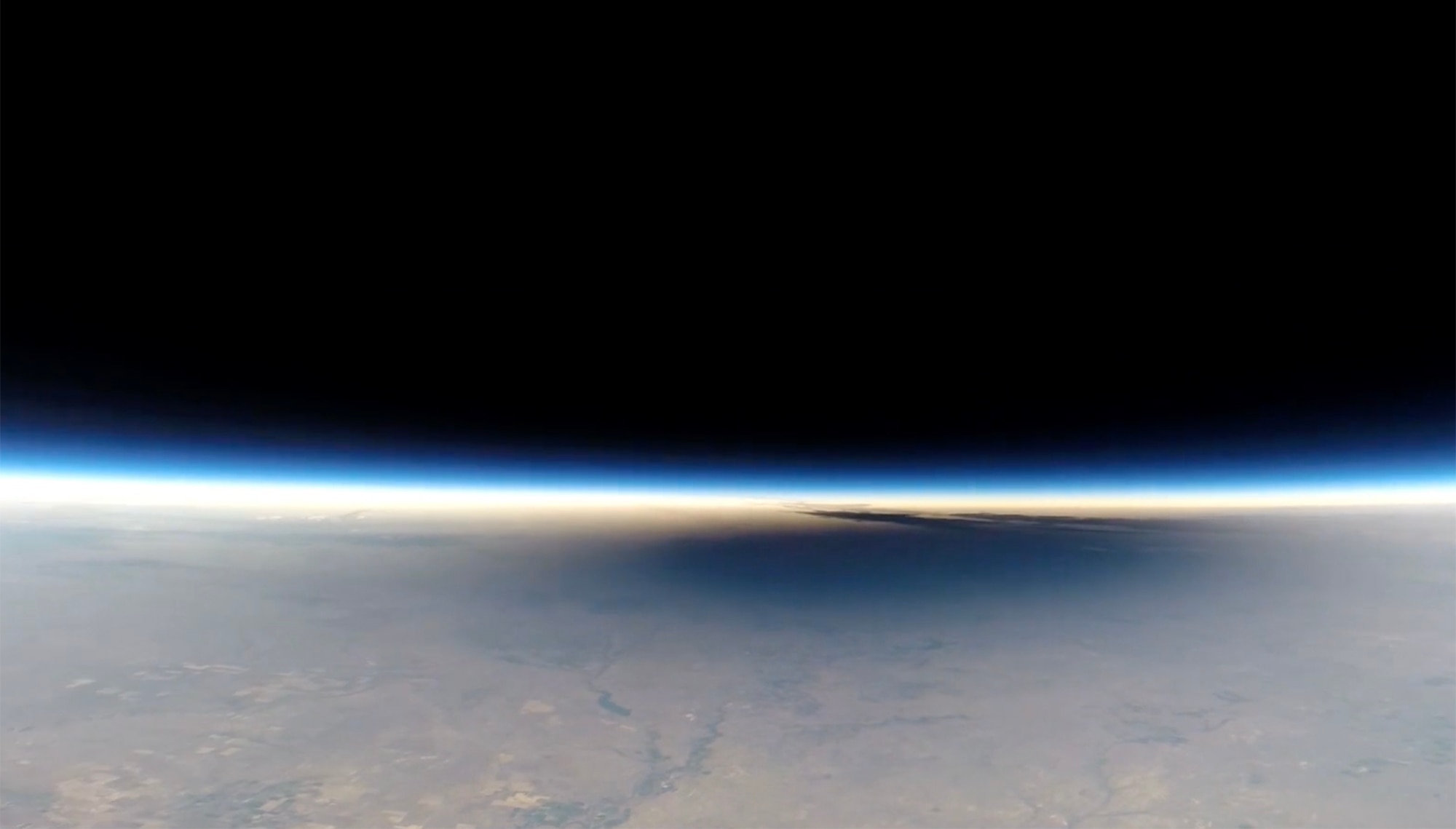Create a free profile to get unlimited access to exclusive videos, sweepstakes, and more!
High school kids get video of the eclipse… from 32,000 meters above the Earth!

Look, I know: After the total solar eclipse in August, you probably reached saturation with images of videos of it. I know I did, having seen the event from every angle and manner possible.
Or so I thought. In fact, there was one I hadn’t considered, and jaded as I was I still gasped with delight when I saw it: a video of the Moon’s shadow on the ground taken from a weather balloon from a height of 32 kilometers (105,000 feet)!
How cool is that? And it gets better: That balloon was launched by high school students. They were participating in a group called Earth to Sky Calculus, started by some of the students who were “tired of being lectured to and wanted to explore Nature in a different, more hands-on way.” So Dr. Tony Phillips — the person who created the fantastic spaceweather.com website, and the students’ teacher — helped the group start launching weather balloons to see what kind of science they could do a few dozen kilometers off the ground.
They now launch balloons regularly, testing out how cosmic rays interact with our atmosphere, how the atmosphere responds to different solar activity, and performing other amazing experiments.
On August 21, a group of them were in Wyoming and launched a balloon with a camera on board to see if they could capture the Moon’s shadow sweeping across the Earth. I’d say it worked pretty well! I like how the swinging and rotation of the payload gives a natural pan around the shadow’s edge.
When I watched the eclipse (my first!) it felt like it was happening just for us, where we were. That’s an illusion, of course, just my brain interpreting the event that way because I was in one spot. But the video from the balloon really shows you that this is a dynamic phenomenon, the Moon’s orbital motion combined with the Earth’s rotation to send the shadow racing across the surface of our planet at hundreds of meters per second (at the balloon’s location, about 750 meters/second, or nearly 1700 miles per hour).
The group also has a video called “The Life of a Balloon,” showing what happens during a flight, that’s worth watching if only because you didn’t know how much you’ve wanted to see a rubber chicken at 30,000+ meters wearing a space helmet and knitted spacesuit.
These flights are a relatively inexpensive $500, and they pay for them through crowdfunding. They have a link if you’re interested in sponsoring a flight, and they sell a poster of the eclipse seen from the balloon, too.
I love this. Whether these kids go on to become professional research scientists or not — and I bet a healthy percentage of them do — these flights will encourage a love of science and a sense of adventure they will carry with them always. We could all use a bigger dose of that in our lives.


























